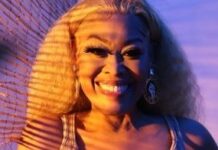Texas Historical Indigenous Burial-ground
East Texas’ oldest historical African American Gravesite is also an indigenous American Burial-ground.
Adding to the antiquity and historical significance of the first official Woodville, Texas Moss Hill Community Cemetery, proclaimed an National Historical Monument in 1994. Moss Hill’s revealing secrets and mysteries have gone undetected for centuries until recent DNA analysis done on elder David Blackmon (of Vallejo, CA) help crack the code of this ancient complicated and complex historic Texas indigenous cemetery.
The Blackmon family lineage goes back to the first Americans – the indigenous people of color who occupied the land before European colonization and although gravesite markers trace back to burials of ancestors Lottie Blackmon in 1917 and Willie Blackmon in 1918. There are 100+ Blackmon ancestors laid to rest on this sacred ground dating back generations ( hundreds of years), although unmarked.
Oral historians say this free family and community gravesite began in the mid-1700s. Later in 1906 John Cruse donated an additional two acres of land, to the Moss Hill Baptist Church which was formally established in 1868.
Indigenous American Pioneers

James Blackmon was born in Moss Hill Texas, October 17, 1876. He died on November 28, 1954. He was married to Jimmie McCarthy Blackmon also indigenous (born in Clear Springs Texas, July 22, 1885. died January 31, 1945). They had eleven children, all born in Moss Hill. Including my father the soul survivor, David Blackmon who turns 98 years young May 20, 2017.
James Blackmon and Jimmie Blackmon owned one of the largest farms in the county … 228.5 acres of prime land in Woodville Texas. They purchased their property which included water rights in 1907 from Grantor R. B. Barclay Jr., descendant of the first Indian agent in Texas, who was appointed by than President Sam Houston.
James Barkley Place Historical Monument (1842)
The oldest home in the county. Built by the first Indian Agent in Texas.
Woodville, Texas … Tyler County
Crossroads and original indigenous home grounds for many pre American tribal – indigenous nations.
The county was created in 1846, named after John Tyler, who signed the resolution to annex Texas to the United States. The name “Woodville” was taken from George T. Woods sponsor of the bill which created the county. He would go on to serve as governor of Texas from 1847 through 1849. James Barclay became the first county sheriff.
History of Moss Hill, Texas
Named after the lush moss growing on trees in the area.
Black and Indigenous Founding Families of Moss Hill


There were approximately 18 homes and ten large families that made up early Woodville. Population est. 100 – 150 individuals, with the largest family and landowners being James and Jimmie Blackmon. They would later divided their adjoining land with six other brothers, sisters and family becoming one of the largest family owned farms and business in the surrounding area.
The original deed has been discovered, naming both James and Jimmie Blackmon as owners of the property; outlining the specifics of all land, timber and water rights including two hot water springs. The deed was signed and acknowledged by RB Barclay Jr. descendent of the first Indian agent of Texas.
Moss Hill, Texas Founding Families
Blackmon family
McCarthy (Blackmon relatives )
Mose
Barkley
Finley ( Blackmon relatives )
Cluff (Blackmon relatives )
Gilder ( Blackmon relatives )
Rigsby ( Blackmon relatives )
Griffin. ( Blackmon relatives )
Barlow ( Blackmon relatives )
Blackmon Farm
Farm house: 4 bedrooms, 1 outhouse, 2 barns, 1 sugar mill, 2 cotton houses, 1 hog pin, 1 horses house, 1 car house ( 1925 Model T later 1932 Ford,) 1 wagon house, 2 goat houses, 1 smoke house, 1 sugar cane grinding shed, 4 active fields, 1 large garden and 2 water springs.
Trees: Timber, pine, oak, cedar, palm, peach, apple and plum
Livestock: 100+ cows, 100+ Hogs, 50+ goats, 50+ sheep, 200+ chickens, one horse and two mules.
Produce: Corn, sweet potatoes, all verities of beans, greens and peas sugar cane, tomatoes, watermelon eggs, onions, cane syrup, peanuts and butter.
Cash crop: Cotton
Moss Hill Community Cemetery – Blackmon – Barlow Ancestral Burial Ground
David Blackmon b. 11/5/1896 d. 12/10/1918
Son of MJ Blackmon. WW1 hero. Died in action
Lottie Blackmon b. 2/13/1887 d. 12/26/1917
Wife of MJ Blackmon
Willie Blackmon b. 1/4/1904 d. 10/20/1918
Son of MJ Blackmon.
James Melvin Blackmon b. 10/17/1876 d. 11/28/1954
Grandfather
Jimmie Blackmon b. 7/22/1885 d. 1/31/1945
Wife of James Blackmon. Grandmother
Mathew James Blackmon b. 1869 d. 1946
Brother of James Blackmon
Samuel Blackmon b. 1904
Louise Blackmon b. 1906 d. 1941
Daughter of James Blackmon
James Henry Blackmon Jr. b. 1909 d. 1945
Son of James Blackmon Sr.
Webster Blackmon B. 1907
Son of James Blackmon
Ben Blackmon
Brother of David Blackmon
Mary Blackmon Griffin
Sister of James Blackmon Sr.
Mandi McCarthy Blackmon
Sister of Jimmie Blackmon
Francis Blackmon
Sister of James Blackmon Sr.
Among others.
David ‘Pops’ Blackmon


David Blackmon recent DNA testing reveals he is the direct descendant of indigenous Americans whose ancestry predates the Europeans and Clovis people who crossed the Barron Straights to North America. His DNA is a cultural mix that includes, indigenous American, Egypto-Nubian, and Asian: the Asiatic Black man.
Paper Genocide
In 1912 Walter Phecker was appointed first Director of the Bureau of Vital Statics. He began a “paper genocide movement” that all 50 states in America practiced with vital records offices all over the country. “He was part of the Eugenics movement who’s mission was to create one race of people which were white.” — Chief Walter Redhawk Brown / “When Is a Indian Not a Indian? When He Is a Negro” (TGEFilms)
“Indigenous tribes were referred to as ‘colored’ after the 1924 Racial Integrity Act was passed we became ‘Negro or Black.'” — Jay Winter Nightwolf / “When Is a Indian Not a Indian? When He Is a Negro” (TGEFilms)
Buried At Historic Moss Hill Community Cemetery
- S. Barlow b. 4/4/1901 d. 3/6/1961
Alice Barlow b. 3/9/1879 d. 4/13/1966
Allen Barlow b. 1904 d. 1965
Argentine Barlow b. 12/18/1900 d. 3/12/1971
Arlene Barlow b. 1/20/1940 d. 4/19/1988
Benjamin Barlow b. 6/4/1892 d. 11/30/1969 – SGT. United States Army
Bennie Ella Barlow b. 12/12/1888 d. 2/1/1985
Booker T. Barlow b. 3/3/1909 d. 3/26/1944
Bryant “Willie” Barlow Sr. b. 3/21/1904 d. 2/9/1994
Clinton Barlow b. 1885 d. 1954
Connie Barlow b. 8/30/1972 d. 1/24/1973
Delois Barlow b. 4/16/1935 d. 3/9/1986
Earl Barlow b. 9/30/1919 d. 8/29/1954 – SGT 245 Old Ammo Company WWII
Ferrell Gilder Barlow b. 5/7/1905 d. 10/19/1926
Fred Barlow b. 4/22/1902 d. 8/12/1924
Gaynell Barlow b. 9/16/1949 d. 11/2/1995
Grady Barlow b. 4/4/1917 d. 11/2/1973
Harriet Jane Barlow b. 9/15/1869 d. 1/8/1913
Hermond Barlow b. 9/20/1911 d. 3/7/1978
JW Barlow b. 3/22/1873 d. 10/22/1932
James Earl Barlow b. 9/9/1950 d. 7/27/1959
Jesse Barlow b. 9/3/1922 d. 1/5/1993
Lottie Barlow b. 1932 d. 1948
Lettie Barlow b. 3/3/ 1891 d. 2/16/1977
Lincoln Barlow b. 6/11/1890 d. 5/25/1984
Maggie Lee Barlow b. 11/11/1934 d. 11/9/1957
Mitchell Barlow b. 2/4/1865 d. 12/28/1939
Nellie M. Barlow b. 11/12/1907 d. 8/12/1995
Oliver Barlow b. 11/31/1916 d. 12/26/1986
R.A. Barlow b. 8/11/1911 d. 5/7/1971 – T/4 US Army WWII
Mrs RD Barlow b. 8/28/1919 d. 3/6/1995
Rogie Barlow b. 6/27/1903 d. 8/20/1989
Thomas Jefferson Barlow b. 6/5/1924 d. 7/30/1983 – PFC US Army WWII
Vance Barlow b. 10/6/1906 d. 8/19/1976
Vera Barlow b. 12/9/1922 d. 5/19/1970
Vinson P. Barlow b. 1901 d. 1933
Willie Barlow b. 5/18/1898 d. 2/5/1953
Zeller Barlow b. 2/18/1907 d. 2/21/1991
Gilder’s
Arthur G Gilder b. 5/25/1895. d. 5/10/1957 – PVT 60 company 165 Depot Brig. WWI
Cora Gilder b. 3/1896 d. 2/22/1973
Dave Gilder b. 3/1888 11/1977 – CLP US Army
Ellis Gilder b. 11/23/1914 d. 3/18/1916
Grant Gilder b. 7/29/1908 d. 3/15/1984
John H. Gilder b. 7/29/1873 – d. ( recheck record )
Joseph Gilder b. 3/16/1916 d. 3/16/1975
Laura Gilder b. 7/30/1875 d. 2/19/1948
Leslie L. Gilder b. 11/20/1920 d. 7/6/1947 – T/5 869 ENGR AVN BN WWII
Missouri Barlow Gilder b. 1887 d. 1934
Obie Gilder b. 9/13/1900 d. 11/2/1985 – PVT US Army WWII
Will Gilder d. 3/30/1935
Willie J. Gilder b. 10/5/1913 d. 6/3/1989
Griffin’s
F. I. Griffin. b. 12/1846 d. 3/20/1929
John Ivy Griffin b. 2/215/1891 d. 1/26/1956
Joseph Griffin b. 4/22/1895 d. 5/31/ 1968 (PVT US Army WWI)
Louella Griffin b. 6/11/1910 d. 1/22/1991
Mabel Riley Griffin b. 4/27/1902 d. 6/2/1988
Mary Griffin b. 1864 d. 1949
Mc Cartney’s

Author Lee McCartney b. 1928 d. 1993 – PFC US Army WWII
Gertie McCartney b. 10/11/1909 d. 11/30/1984
Rev. Harvey McCarthy b. 7/27/1906 d. 8/19/1993
JC McCarthy b. 1878 d. 1926
Luther McCarthy b. 7/28/1903 d. 8/23/1982
Rigsby’s
Charlie A. Rigsby b. 9/21891 d. 6/16/1987
James Henry Rigsby b. 5/20/1932 d. 4/27/1996
John D. Rigsby b. 12/26/1919 d. 5/5/1989
John Lewis Rigsby b. 5/4/1918 d. 1/22/1990
Mary E. Rigsby b. 11/2/1897 d. 2/10/1963
Robert Louis Rigsby b. 1898 d. 1987
Rosetta Rigsby b. 1898 d. 1987
Lizzieblth Cluff d. 9/26/1926
Louis Cluff b. 1904 d. 1971.
Red Rain Black Moon Snow River
Indigenous History of Ancient America
The Caddo Nation was and is a confederation of several southeastern indigenous nations, who traditionally inhabited much of what is now East Texas, Northern Louisiana and parts of Southern Arkansas and Oaklahoma.
Know first by the Spaniard’s as Tejas, (Te-haas ) today the word is pronounced as Texas, meaning ” those who are friends.”
The Caddos were the principle representatives of the great Caddon linguistic family, a federation consisting of several divisions.
Before the mid nineteenth century the term Kuddo only referred to one nation although more than twenty five distinct but closely affiliated groups/nations centered around the Red River. The first European description of the Kuddo’s came from Spain’s DeSoto in 1542.
The Caddoan linguistic stock inhabiting northeastern Texas culture was similar to the Hasinai Nation that lived on both sides of the Red River. Historical evidence has proven that two confederations existed in the area at the time, instead of one.
The Caddos are an extension of the Wood Land period peoples from the Fourche Marlin Culture and Mossy Grove cultures who were living in ancient America between 200 BCE to 800 CE.
They were farmers and archeological evidence proves that the cultural consistency was unbroken from pre-history to present date.
After the turn of the 20th Century the Curtis Act dismantled tribal institutions. The Dawes Act was directed at assimilation by breaking up tribal common landholdings into allotments for individual members.
The Oklahoma Indian Welfare Act provided the opportunity for the Caddo to reform their tribal government , organizing in 1938 as the Caddo Indian Tribe of Oklahoma.
Hasinai Nation
How did they live?
The Caddos of East Texas, built permanent structures – lodges with thatched roofs each village would have a temple and a sports field. Some villages were surrounded by log walls for protection … the Indigenous were agricultural … living in settled villages farming the land. They built huge long-lasting houses from wood frames in a pyramid shape, with some large buildings over forty feet.
The tradition of these indigenous people do not go back to a time when they were not cultivators of the soil; their fields surrounded the village and furnished their food; they were sedentary in their habits and lived in fixed inhabitation.
Their dwellings, made of a wooden framework covered in grass usually had an open space which served as a social and ceremonial gathering place. Couches covered with mats were arranged around the walls inside the house to serve as seats by day and beds by night. They were also used as room separators. The large fire place was built in the middle. Food was cooked in pottery pots, and baskets of various sizes were skillfully made.
Vegetable fibers ( hemp ) was woven and the cloth was made into clothing. They also used buffalo and fur pelts for winter clothing.
Descendants were traced through the mother bloodline. Chieftainship was hereditary.
Footnotes
Moss Hill Community Cemetery
David Blackmon – First-hand History Narrative
Black Tyler Texas Cemeteries
Tyler County Texas Black Cemeteries
By Jim W. and Ann Crewslaird
Access Genealogy
Tyler County, TX Black Cemeteries:
https://www.countygenweb.com/txmontgomery/tyler_county_black_gravestone_inscriptions.pdf
When Is A Indian Not a Indian? When He Is a Negro
https://www.youtube.com/watch?v=Fu1zdH_YVn8&sns=em
We Publish News 24/7. Don’t Miss A Story. Click HERE to SUBSCRIBE to Our Newsletter Now!











